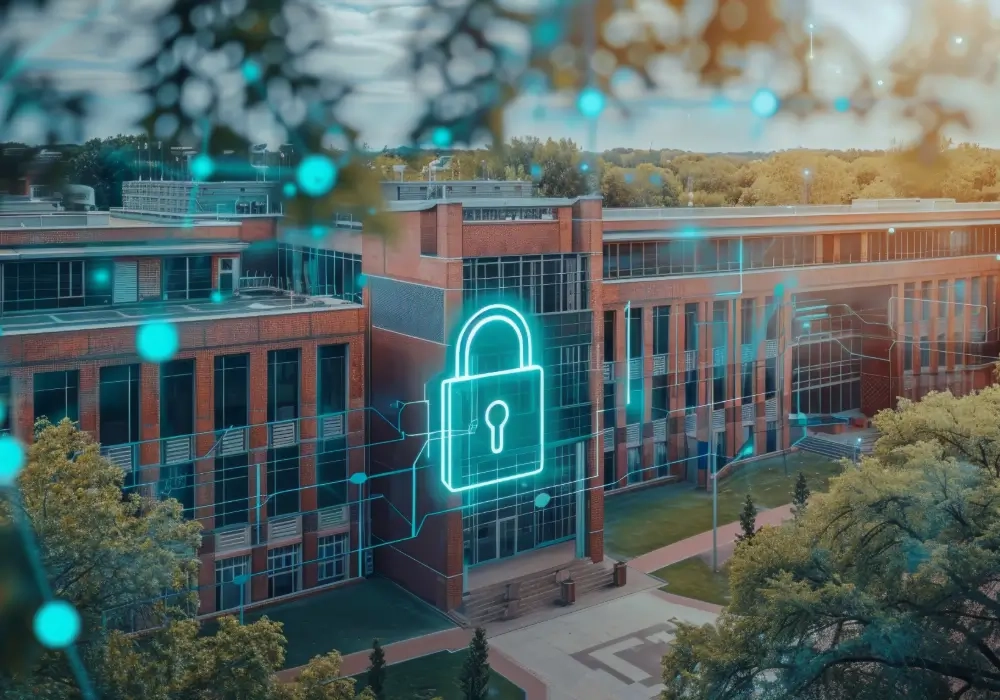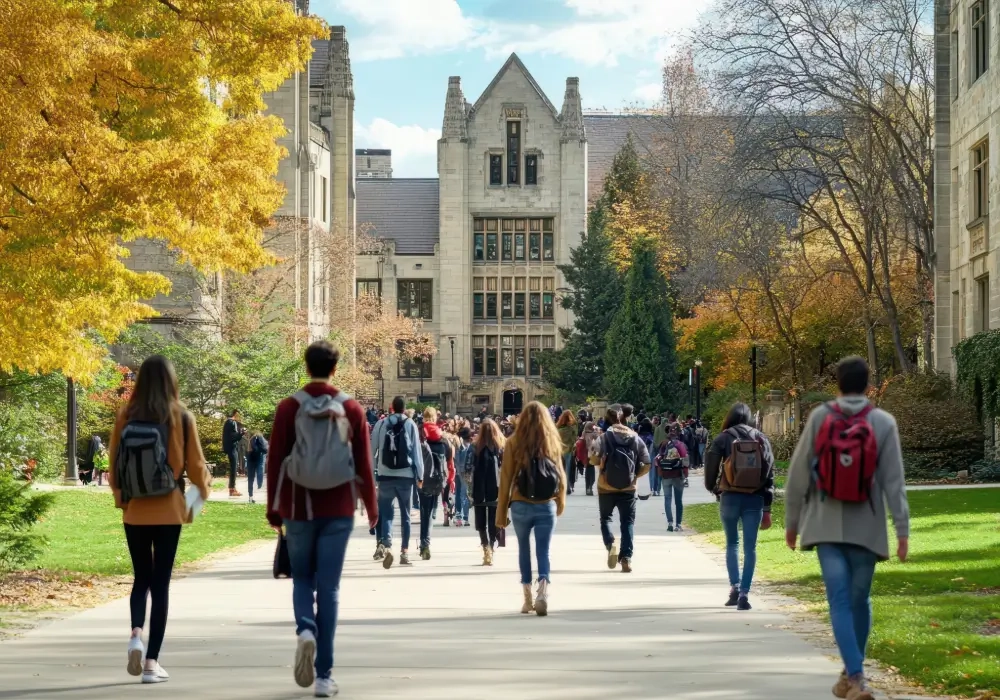As many campuses now face increased security challenges, we explore how you can find and apply for school safety grants to help tackle this.
Over the last two decades, the number of school shootings has doubled in the US, and this is only one threat that your institution faces. Other issues such as cyberbullying and other violent crimes plague your campus also.
With a growing threat of campus crime on the horizon, protecting your staff and students is important for their safety and education.
However, for most campuses, budgets are likely to be tight and need to stretch across various educational areas, meaning safety and security funding can be difficult to manage.
Luckily, there are school safety grants designed to support this that you can apply for to help with this type of funding.
The Consequences of Poor Safety at Your Campus
Poor campus safety can lead to increased incidents of crime, such as theft, vandalism, assault, sexual violence, and other criminal offenses.
This places both staff and students’ safety at risk, which can lead to mental health issues, lowered academic performance, and institutional distrust.
Other types of safety concerns, including cyberbullying and vaping, also pose threats to your campus as they can create reputational damage for the school with parents and the local community.
You hold a responsibility to protect staff and students whilst on your campus. If you fail to provide adequate security, you could be liable for legal and criminal consequences, which could have a devastating financial and reputational impact.
What Are School Safety Grants?
School safety grants are financial awards that aim to support educational institutions to improve the safety of their students. They can be used to purchase equipment, pay for training, and implement new technologies.
There are various educational institutions they support, and these are as follows:
- K-12
- Local Education Agencies
- State Education Agencies
- Institutions of Higher Education
How School Safety Grants Can Support Your Institution
With campuses facing multiple security challenges, especially more recently, the grants aim to provide additional support to institutions to combat the growing threats for their students.
In turn, this should boost students’ school experience, increase school attendance, and boost academic achievements.
There are four main areas in which school safety grants support:
- Violence Prevention - These grants help to implement programs that identify and respond to violence threats.
- Mental Health Support - This type of grant focuses on helping schools provide resources to students and staff to address mental health concerns.
- Emergency Preparedness - These grants help schools prepare for emergencies and natural disasters.
- Cybersecurity - This grant helps schools protect their information systems from cyber threats.
Although these are the four main areas that grants support, each grant is unique and will have particular sectors they can support in to help with your school’s safety.
A Guide on How to Find and Apply For School Safety Grants
With various grants available to schools, it’s important to understand how to find the grants relevant to you and complete the application form for them.
Follow our step-by-step guide on how to do this below:
Research the Grants Available to You
The first step is to find out the grants currently available to schools. Grants are released at various points throughout the year, therefore knowing where to go to keep on top of these announcements is key.
There are two official websites you can visit to find out this information:
- SchoolSafety.gov - A grant finder tool that provides you information on upcoming grants, their deadlines, a summary of the funding type, and a link to access the application form from.
- U.S. Department of Education - Offers a variety of discretionary grants through the Office of Safe and Supportive Schools.
Before exploring the grants, consider the key areas you wish to focus on or potential weak spots at your campus as this helps to understand which ones you should prioritize first regarding your application.
Check the Grant’s Requirements
As mentioned, every grant is unique and has its own requirements in order for your school to apply for the funding.
Some grants may be limited to a particular State or group of States, a specific education level, or type of organization, and you want to avoid getting too far into the application process before you realize this.
Therefore, ensure you check the requirements before starting any application form.
You will normally find this information on the organization’s website who are providing the funding or in a supporting document to the application.
Make sure that for any grants that you find that you make note of the deadline as it is paramount that any applications are submitted before this, otherwise they will not be accepted.

Secure Any Necessary Registration Credentials
To apply for school safety funding in the US, you must register with the System for Award Management (SAM) database and obtain a Unique Entity Identifier (UEI).
From here, you will need to provide a Taxpayer Identification Number (TIN) from the IRS and designate an E-Business Point of Contact (E-Biz POC) and Authorized Organization Representative (AOR).
There may be additional registration requirements for specific grants that need to be obtained and you will need to gather this from the application details. Examples include, requiring local Government awards agency or local award management system registration.
Review the Grant’s Criteria
Once you have established the grants you are eligible for and wish to process an application form for this, the next step is to understand the application’s criteria for the grant.
There may be specific information required or a layout that you must follow when applying for the grant.
It is key that you follow the criteria as requested as applications may not be considered if the process is not completed in the manner specified.
The worst case scenario is that you produce all the content for an application for it to not match the grant criteria, and you either need to correct this before the deadline or the deadline is closed and you are no longer able to apply for the grant at all.
Collect Supporting Documentation
Within the application details or supporting documentation provided with this, it will explain the information and documentation required for the grant. This may include the requirement of supporting documentation.
It is recommended that this evidence is gathered and reported independently, so that when grants appear you already have the information at hand to utilize.
This will streamline the process and allow you to easily collect together any evidence quickly for multiple grants simultaneously in an efficient manner.
Where supporting documentation is specifically requested, you must ensure this information is provided and in the correct format for the grant application otherwise you place your proposal at risk.
Remember that you are potentially competing with potentially thousands of other educational institutions for this funding and your supporting documentation needs to be clear and present your proposal well.
Take your time and consider the information you include.
Consult External Professionals
Seeking further support can often enhance your application and ensure it meets the high standards expected from it. Especially for educational institutions who may not have applied for a grant before, gaining an outside expert’s opinion can be extremely beneficial.
Grants can be highly competitive and speaking with a security expert could help shape your approach and display to the grant’s decision makers that you have an expert edge with your proposal that others may not have.
Additionally, consulting an external person who has supported other educational institutions with school safety grants previously will give you insight specific to that of the applications you will be creating.
Complete and Review the Grant Application
Once you have completed the data gathering process, you will need to write the bid for the grant submission.
Following the completion of your application, you should always review it against the grant criteria to ensure you have fulfilled all the requirements.
You should also run a check on any errors that may not have been found throughout the grant application process. Repeated spelling and grammatical errors could appear unprofessional or unpolished.
Top tip: If you have created the application or have been heavily involved in the process, consider having a colleague review it as this provides a fresh pair of eyes’ perspective on it.
Submit the Proposal by the Deadline
All school safety grant applications will have a submission deadline which you MUST adhere to. Not doing so will mean the application window will close and no further applications will be accepted.
Therefore, always start them with plenty of time prior to the deadline and submit the application in a timely manner.
Although there is a deadline, providing the application prior to the date rather than on the day is safer for you to avoid pressuring the situation and causing an issue with the application submission.
Complete Campus Security with WCCTV
For physical safety and security-related grants, proposals will often expect a financial plan of the types of security you will be utilizing, the cost of such measures, and the benefits they can provide.
Due to the strict budgets provided with this type of funding, you will need to ensure that the security you invest in provides both high-quality surveillance and is cost-effective.
As much as the cheapest option may allow for more security measures to be implemented, this does not result in high-level security in most cases. Therefore, utilizing mobile surveillance systems such as our Solar Surveillance Trailers, you will be provided with a cost-effective, all-in-one security solution without skimping on quality of service.
Depending on your needs, you can fit them with up to 4 infrared PTZ, advanced tech cameras that can provide a 360 degree view of your campus. Not only do they live record incidents for evidential purposes, but all of our products are backed by remote monitoring services which helps to detect, deter, and deal with active incidents to both prevent or de-escalate any crime.
With the additional offering of AI Video Analytics, our fully-managed service can be boosted to provide further precise tracking of vehicles and individuals, even in cases of loitering.
Interested in a quote to support a proposal or just received a grant to support your school’s security? Get in touch with one of WCCTV’s Surveillance Trailer’s experts today who can guide you on this.




